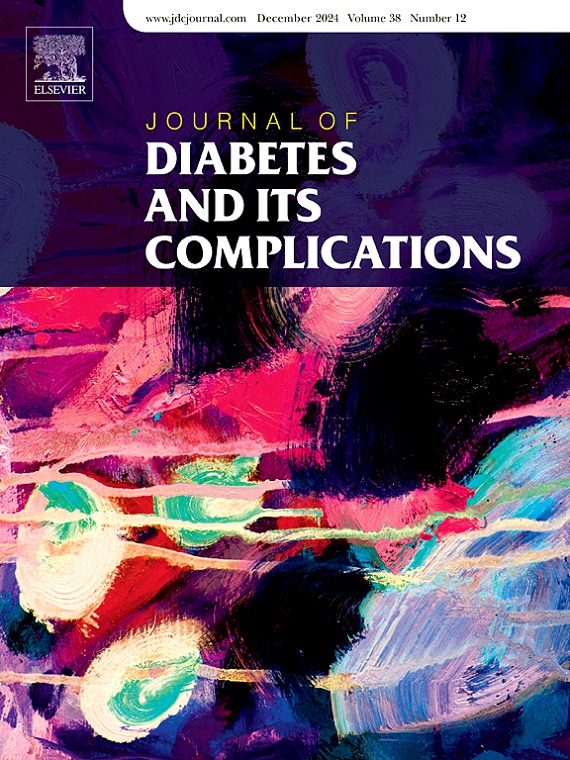Implementation of evidence-based foot screening in people with diabetes: A scoping review
IF 2.9
3区 医学
Q3 ENDOCRINOLOGY & METABOLISM
引用次数: 0
Abstract
Background
Recommendations to prevent diabetes ulceration and amputation include an annual foot check, primarily screening for sensation and circulation. Using these simple, evidence-based components is vital to identifying complications early, assessing risk, and managing care to prevent or delay amputations. However, routine implementation of these assessments is suboptimal and approaches to their integration remain poorly understood.
Aim
We aimed to identify and synthesize information on the factors affecting implementation of simple evidence-based diabetes foot screening.
Methods
We reviewed published and grey literature using a blinded two-stage process by two independent reviewers. Included studies were primary research that implemented or improved foot screening for adults with type 1 or 2 diabetes, assessing at least one of the following: 10-g monofilament sensitivity, pedal pulse palpation, or history of ulceration or amputation. A thematic synthesis approach was used.
Results
We screened 5133 titles and abstracts, reviewed 102 full-text articles, and included 26 studies in the final analysis. We identified four key themes: (1) Existing diabetes screening (i.e. retinal screening) or treatment interventions (i.e. medication collection) provide opportunities for synergistic integration; (2) Annual event-based foot screening (e.g. on World Diabetes Day) in lower resource settings provides community-focused preventative care; (3) Further opportunities to increase access to foot screening include self-administered screening and screening in complex residential settings; (4) Healthcare provider champions are essential for local foot screening implementation in primary and secondary care.
Conclusion
Further research should evaluate the issues identified in these four themes, in different contexts, and with support of implementation frameworks.
在糖尿病患者中实施循证足部筛查:范围综述
预防糖尿病溃疡和截肢的建议包括每年一次足部检查,主要是检查感觉和循环。使用这些简单的、基于证据的组件对于早期发现并发症、评估风险和管理护理以预防或延迟截肢至关重要。然而,这些评估的常规实施是次优的,并且对其整合的方法仍然知之甚少。目的:识别并综合影响循证糖尿病足筛查实施的因素。方法采用两阶段盲法,由两名独立审稿人对已发表文献和灰色文献进行综述。纳入的研究是对成人1型或2型糖尿病患者实施或改进足部筛查的初步研究,评估以下至少一项:10g单丝敏感性、脚脉触诊或溃疡或截肢史。采用了专题综合方法。结果共筛选了5133篇题目和摘要,审阅了102篇全文,最终纳入26篇研究。我们确定了四个关键主题:(1)现有的糖尿病筛查(即视网膜筛查)或治疗干预(即药物收集)提供了协同整合的机会;(2)在低资源环境中,每年基于事件的足部筛查(例如在世界糖尿病日)提供以社区为重点的预防保健;(3)进一步增加足部筛查的机会包括自我筛查和在复杂的居住环境中进行筛查;(4)卫生保健提供者冠军是必不可少的地方足筛查实施初级和二级保健。结论进一步的研究应该在不同的背景下,在实施框架的支持下,评估这四个主题中确定的问题。
本文章由计算机程序翻译,如有差异,请以英文原文为准。
求助全文
约1分钟内获得全文
求助全文
来源期刊

Journal of diabetes and its complications
医学-内分泌学与代谢
CiteScore
5.90
自引率
3.30%
发文量
153
审稿时长
16 days
期刊介绍:
Journal of Diabetes and Its Complications (JDC) is a journal for health care practitioners and researchers, that publishes original research about the pathogenesis, diagnosis and management of diabetes mellitus and its complications. JDC also publishes articles on physiological and molecular aspects of glucose homeostasis.
The primary purpose of JDC is to act as a source of information usable by diabetes practitioners and researchers to increase their knowledge about mechanisms of diabetes and complications development, and promote better management of people with diabetes who are at risk for those complications.
Manuscripts submitted to JDC can report any aspect of basic, translational or clinical research as well as epidemiology. Topics can range broadly from early prediabetes to late-stage complicated diabetes. Topics relevant to basic/translational reports include pancreatic islet dysfunction and insulin resistance, altered adipose tissue function in diabetes, altered neuronal control of glucose homeostasis and mechanisms of drug action. Topics relevant to diabetic complications include diabetic retinopathy, neuropathy and nephropathy; peripheral vascular disease and coronary heart disease; gastrointestinal disorders, renal failure and impotence; and hypertension and hyperlipidemia.
 求助内容:
求助内容: 应助结果提醒方式:
应助结果提醒方式:


